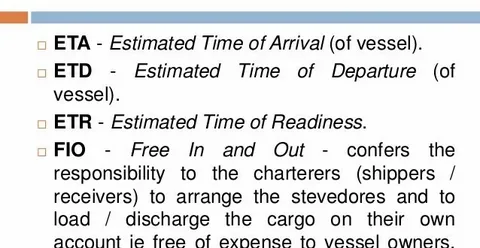
Learn what ETD (Estimated Time of Departure) means in shipping sense of complete term. Get new knowledge about the influence of ETD on the logistics planning, customs clearance, supply chain management, and global freight operations with the help of professional freight forwarders.
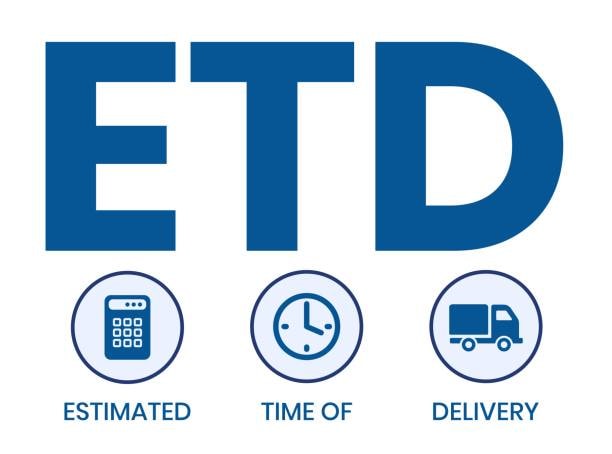
The world of shipping and logistics, especially when the international domain is being approached, is a complicated one where having the gist of terms is essential to having a successful freight management. Some of the concepts are as vital as ETD, which is the Estimated Time of Departure, or estimated departure time . This is a basic shipping term that is central in the planning of logistics services, the management of the supply chain, and effective freight operations in the shipping industry all over the world.
What is ETD: Understanding the Core Definition
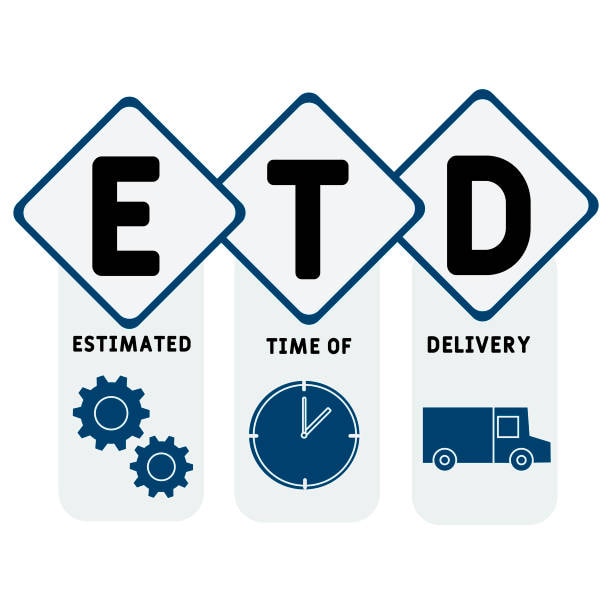
ETD or Estimated Time of Departure is a plan estimate of the date and time a vessel, aircraft or any other mode of transport is supposed to be out of its port of origin/starting point. It is a very important measure that is a determining factor in the arrangement and program of the later practices in the shipping chain and is relied on by shipping companies, freight forwards and organizations to keep in record the voyage and schedule of shipments.
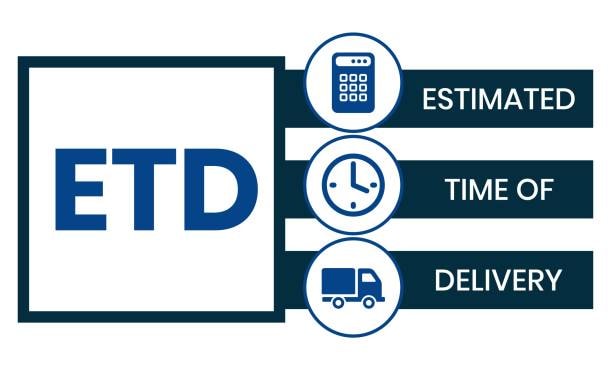
ETD can also be regarded as one of the building blocks of logistics coordination as it allows all interested parties of the supply chain to get ready in advance to move cargos. In comparison with the actual departure times, ETD gives sufficient notice before which the full shipping process can be planned properly and the required resources can be allocated.
ETD vs ETA: Key Differences in Shipping Terminology
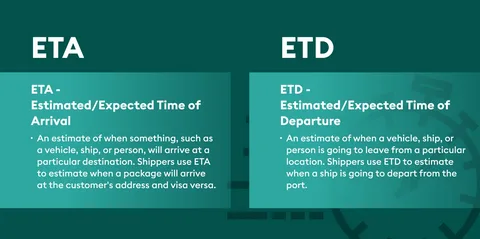
Whereas ETD is concerned with the departures, ETA (Estimated Time of Arrival) reflects the expectation of the freight to arrive at a destination, which arrival refers to the timing of delivery . ETD is the estimated date when a shipment is expected to depart the present position, whereas ETA gives the port officials and destination companies time to prepare the offloading. These two measures supplement each other to offer the full visibility during the shipping process, including the estimation of arrival times .
Knowledge in ETD and ETA are important in order to manage logistics effectively since they provide a time line model that shapes the decision on ships and other arrangements when moving origin to destination. Both measures are used by the professional freight forwarders who organize the complex intermodal freight systems.
The Critical Role of ETD in Logistics Planning
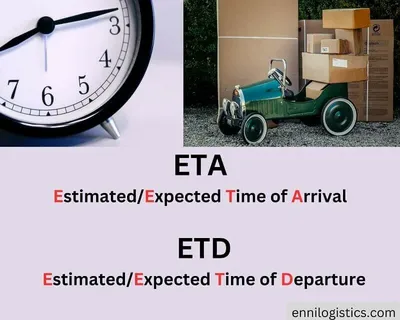
ETD plays numerous vital roles in contemporary logistics operation. It allows shipping companies to maximize the schedules of their vessels, port authorities to assign berths and freight forwarders to coordinate intermodal links. Efficiency of the later stages of the supply chain is seriously affected by the accuracy of the ETD, impacting overall operational efficiency .
In companies that operate in the international trading, ETD forms the basis of inventory management and scheduling of production processes as well as commitment to customers. An efficient communication of ETD information, when the information is itself accurate, helps to reduce disruptions, and it ignores the overall performance of the whole supply chain.
How ETD Affects Supply Chain Management
To coordinate complicated global supply chains, supply chain managers require quality information about ETD. The flight schedule affects warehouse operations, customs clearance procedures, downstream transportation arrangement. In the case of any ETD change, the ripple effects are created across the supply chain, making live tracking essential for all parties involved .
A well managed ETD allows JIT inventory plans, ensuring that when the delivery truck arrives, lower inventory storage costs, as well as better cash control is achieved. The ability to earn competitive edge in terms of responsiveness in supply chains and customer service density is often attained through successful ETD planning, which helps in defining the delivery time window.
ETD in Maritime Shipping Operations

In ocean container freight, ETD is normally when an ocean sailing vessel leaves port of loading. Maritime ETD planning should ensure to consider the port congestion, weather conditions and availability of vessels. Etd schedules assist ship operators to assure cargo loading schedules improvement, and to contact port terminals dual meaning.
The complexity of scheduling inherent in the maritime industry is one of the reasons why proper forecasting of ETD is quite difficult. Other factors like the schedules of tides, availability of pilots and the completion of the cargoes loading all affect the real time of departures and to ensure that the ETD is maintained a complicated planning system is a must.
ETD in Air Freight and Express Shipping
Luftfracht companies benefit a lot on accurate ETD since air freight is time bound, which is crucial in the logistics industry . Airlines plan ETD according to slot availability at the airport, while also considering the actual time of arrival in relation to weather conditions and loading of cargoes. The shorter transit by air freight increases the importance of the ETD accuracy in keeping the delivery schedules tight expected date.
Courier and expedited freight services offered on an express service charge a premium to ensure certain delivery times through ETD. The quality services are usually charged heavily appealing to high costs of relatively comprehensive ETD schedules.
Understanding ATD and ATA in Relation to ETD
Whereas ETD shows an estimated departure information, ATD (Actual Time of Departure) shows when the cargo is actually off its origin point. Actual Time of Departure (ATD) and Actual Time of Arrival (ATA) give shipping performance the right amount of monitoring. They are the actual times which can be used as information in refining future ETD accuracy.
The comparison of estimated and actual times provides the possibility to improve the logistics planning as long as possible. Freight forwarders utilize ETD versus ATD variances to analyse their trends and the factors influencing eta to realize improved accuracy in their schedule as time goes by.
Factors That Influence ETD Accuracy
There are various factors that influence reliability of ETD in shipping processes. Factors such as weather, the congestion at ports, available equipment, and customs clearance can affect actual departure. These factors are tracked in real time by professional logistic providers in order to have ETD accuracy.
Since the port management systems, vessel tracking, and weather forecasting technology have advanced, ETD accuracy has become very high. But due to the complexity of worldwide shipping networks, a certain level of ETD change is inevitable delivery drivers.
ETD Documentation and Communication
There are several shipping documents that should be compiled and used in proper ETD documentation such as bills of lading, booking and shipping instructions. In shipping confirmations, Estimated Time of Departure (ETD), as well as Estimated Time of Arrival (ETA), is indicated; it is a travel plan of the shipments. The effective conveying of ETD information regarding each delivery shipment makes all the stakeholders in line with each other.
ETD communication with digital platforms and tracking systems has become revolutionary as it offers real-time updates and notification in case of changes. Such technologically advanced functionalities make the process more transparent and help anticipate schedule change in transportation services .
ETD’s Impact on Customs and Compliance
The current customs demand to have precise ETD information in order to do the cargo clearance appropriately delivery time windows. The documentation relating to export has to match the departure schedules of vessels, and the expected duration of the transit can be used by customs officers to schedule inspection operations using ETD. Dawdling of customs can negatively impact ETD compliance directly real time visibility.
Time is of essence in international trade, and ETD is a major tool in the area of compliance entire supply chain. Customs documentation is in line with ETD schedules and problems of delays in clearances are avoided by the intervention of professional freight forwarders.
Technology Solutions for ETD Management
Contemporary shipping enterprises make use of complex computerized systems to control the process of ETD planning and communication. These platforms compile with port management system, vessel tracking network, and customer communication tools, ensuring end-to-end ETD visibility, as part of eta and etd management.
The technologies of artificial intelligence and machine learning are gaining importance as tools of ETD forecasting and assessing past data patterns, weather forecasts, and operational variables. These technologies are helping to enhance accuracy and trustworthiness of ETDs throughout the shipping world.
ETD Best Practices for Shippers and Freight Forwarders
Effective ETD management involves active communication, planning backup and constant surveillance. Seasoned freight forwarders also keep in touch with the carriers, check possible delays, and make timely announcements to all the parties involved final point.
Professional logistics companies also leave a margin of time in their ETD planning so as to cater to unforeseen delays. Such a conservative policy assists in preserving the customer satisfaction at the same time as that demands that delivery promises are realistic.
Common ETD Challenges in International Shipping
One of the greatest threats to the accuracy of ETD in modern shipping is the congestion at the ports. Capacity and congestion constraints in major ports in various parts of the world often result in delays of a few hours or even days in departure of vessels. Travel time interruptions due to weather, especially storm seasons, also causes large uncertainties in ETD.
The shortage of equipment, such as the containers and chassis, may not allow the cargo to be loaded and shipped on time. Respectively, labor strikes, regulatory aspects, geopolitical movements make ETD planning and execution even more complex.
ETD Optimization Strategies
There are different ways of utilized by the leading logistics companies to maximize ETD performance cargo ship. They are diversification of carrier relationship, the ability to secure flexible route plans and investing in sophisticated forecasting system. Periodical analysis of performance assists to realize available opportunities of improvement real time tracking customer experience.
THrough cooperation with the partners in the chain of supply, there is better ETD coordination. Exchange of information and coordination of schedules among various stakeholders enhances efficiency of the whole supply chain, including last mile delivery, and the reliability of ETDs warehouse space.
The Future of ETD in Digital Logistics
Newer technologies will also be able to increase the accuracy and control of ETC. The sensors of the Internet of Things (IoT) give updates on cargo and equipment in real time. Blockchain will promise enhancement of documentation accuracy and transparency operational costs.
In the future, human-related variability in ETD can be diminished using autonomous vehicles/ port operations that are automated. Such technological innovations will probably increase the accuracy and dependability of ETD planning in all the transportation modes.
GWT Worldwide: Professional ETD Management Services
Shenzhen Guanwutong International Freight Forwarding Co., Ltd. (GWT Worldwide) is dedicated to the development of customized logistic services which offer high-quality comprehensive solutions to their customers and involve the skillful management of ETD by all modalities of transportation. GWT Worldwide provides innovative and easily customised logistics services to business across the world based on some advanced technological integration and network of trusted partners through reliable and cost effective services.
The main services that GWT Worldwide offers are air freight and cargo shipping, ocean and Seefracht delivery, services to China-Europe railway transportation, international express and courier services, customs clearance and warehousing as well as Amazon FBA delivery and labeling services final destination. The effectiveness of efficiency, transparency and customer satisfaction make the company achieve a suitable ETD planning and implementation to iron out frictionless global trade activities.
Schlussfolgerung
ETD (Estimated Time of Departure) is one of the core concepts of shipping and logistics operations of the present day. Effective supply chain coordination, customs, and customer service delivery can be achieved through its proper planning and communication accurate eta. Since worldwide trade is constantly growing, managing ETDs professionally becomes a key to logistics success.


Thank you for reading!
Have questions, corrections, or better ideas? We’d love to hear from you!
We value every piece of feedback and promise to reply within 24 hours. Let's make this guide better together!
Note: Spam comments will not be published.